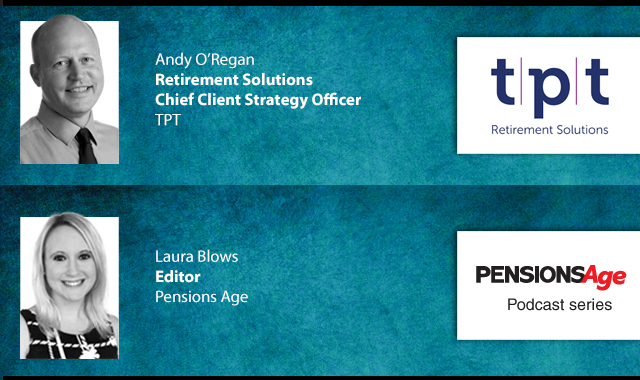Edmund Tirbutt examines the move towards implementing both passive and active management within an investment portfolio
The active versus passive debate is assuming a new dimension in UK pension fund investing, moving away from arguments focusing simply on ‘either/or’ towards those concerning how best to combine the two. A wealth of statistical data emanating from the passive camp is becoming increasingly hard to argue with and even the most ardent supporters of active fund management now commonly acknowledge that passive investment can have a useful role to play in certain situations.
According to research findings published by the iShares arm of BlackRock in October 2012, indexing through index mutual funds or exchange-traded funds (ETFs) now accounts for over 11 per cent of assets under management in the European asset management industry, which represents a doubling in the last six years. Since the onset of the financial crisis in 2007, cumulative net new flows into equity and fixed income indexing funds have totalled nearly 1.5 trillion euros, while active equity and fixed income net new flows have been effectively zero because of significant outflows in 2008 and 2011.
iShares head of EMEA sales David Gardner says: “Although the research isn’t specifically on pensions there is no doubt that pension fund flows will broadly reflect this overall trend. Indeed, they probably led this movement. At one end of the scale you have truly active managers achieving alpha (outperformance) and at the other you have passive funds with very low costs. But it is the middle ground of active managers charging significant fees but not varying much from the index which is going to become increasingly questionable going forward.“
Research findings by Vanguard published in October 2012 certainly seem to bear out this line of thinking. They show that over the last 15 years, 57 per cent of UK equity funds that survived the time period underperformed their benchmark. Over 10 years the proportion was 53 per cent and over five years 59 per cent.
Trustee issues
But pension fund trustees should possibly reflect on the fact that, rather like football managers, active fund managers could well produce better long-term results if they are given more time to see their strategies through. The challenge is not just that of trying to select a genuinely skilled manager at outset, it’s also about sticking with them during the inevitable bad patches.
Allianz Global Investors head of UK institutional business Andrew Wiggins says: “I have met investors who lost their confidence in their ability to stick to skilled managers during a period of underperformance and went passive at just the wrong time. This was often following a period of market turbulence or dislocation, when companies‘ share prices don’t reflect the underlying fundamentals of their businesses and skilled managers picking stocks on fundamentals struggle. Pension funds should therefore ask managers before appointment in what market conditions the fund is likely to underperform.”
The need to stick with active fund managers for the long haul is arguable even more important with pensions than with other investment vehicles because of the long-term nature of the savings commitment. Even a very slight outperformance can prove quite eye-catching once the impact of compound returns has come into play.
Zurich head of corporate wealth investment strategy Jonathan Parker says: “For a typical run-of-the-mill active fund you are probably paying around 0.5 per cent more in charges than with a passive fund but you would be looking to achieve a 1 per cent to 1.5 per cent superior return. Even a 0.5 per cent superior return over 30 years will deliver you an increase in overall fund return of around 30 per cent because of compounding.”
The fact that so many pension fund trustees are lay trustees also clearly doesn’t help active management’s cause because many of these individuals lack the time and commitment necessary to fully understand their members’ requirements and they often don’t have the appetite for making bold decisions.
PTL managing director of pension fund trustees Richard Butcher says: “There is a case for using active management for more sophisticated investors and passive for the less sophisticated ones but in my experience the vast majority of trustees don’t understand their members. The current trend seems to be for them to settle for passive management as the market is relatively flat and they know they can guarantee to control costs but not returns.”
Cost versus control
Interestingly, whilst cost saving is undoubtedly the easier concept to understand, opinion amongst experts is notably divided as to whether it constitutes the primary attraction of passive investing or whether it is secondary to the desire to obtain greater control.
Outsourced investment portfolio service provider Assetfirst is currently using passive funds exclusively on every pension fund it advises on when there’s a viable option available, but it describes the low costs involved merely as a ‘happy by-product’. Its main motivation is that there is currently a lot of emphasis on risk controls in portfolios and, because it’s easier to take a view on markets than on companies, using passive funds is considered the best way of translating asset allocation views into individual portfolios.
Vanguard is very much in the other camp, emphasising that it doesn’t only believe in passive management, but in low-cost investing as whole. It points out that, although it currently only offers indexed solutions in the UK, it has a large outsourced book of actively managed funds in the US.
Passive problems
Whilst the passive bandwagon is clearly well and truly rolling its momentum will always be kept in check by some fundamental issues that will prevent the approach from becoming completely dominant.
Fidelity Worldwide Investment, head of investment, Investment Solutions Group Richard Skelt says: “It’s fairly easy to mirror the FTSE 100, and the case for indexation is at its strongest when markets are large, liquid and efficient. But as soon as you stray away from the plain vanilla asset classes then the problems for passive management start to increase. It’s easier for active managers to add value in small to mid caps but more difficult for passive managers in those areas because of illiquidity.”
Simply tracking an index based on market capitalisation can also create problems as a result of the risk profile of the fund becoming distorted over time. Pioneer Investments head of portfolio construction Ali Chabaane highlights how the euro-debt crisis has contributed towards a change in the composition by credit rating of the Barclays Euro Aggregate Bond Index – a euro investment-grade index commonly used as a benchmark by asset managers.
He points out that in June 2002 the AAA and AA-rated instruments accounted for roughly 60 per cent and 29 per cent of the Index’s weight respectively, while they now account for less than 50 per cent and 10 per cent respectively. Conversely, A-rated bonds, which accounted for 8 per cent of the Index in 2002, now represent more than 25 per cent. At the same time, the BBB-rated instruments increased from 4 per cent to 15 per cent of the Index’s overall composition. As a result, investors who maintained a stable allocation to this Index over time have seen the average credit quality of their portfolio decline.
New developments
This problem could eventually be reduced by using the concept of ‘smart beta’ – tracking indices that use financial metrics other than market capitalisation weighting to determine their make-up.
Parker says: “It’s a big area of discussion but there has been little action yet. It started in defined benefit pension schemes around five years ago but I’m not aware of anyone doing it in defined contribution schemes yet, although I expect to see it being used for them in the next five years.”
A trend towards using ETFs is, however, much more developed and clearly here to stay because of their ability to offer liquidity and choice. The fact that their prices are coming down is also making them more cost-effective.
IShares’ David Gardner estimates that under 15 per cent of current passive pension fund investment is being done via ETFs but notes that the volume is accelerating as pension funds use them for tactical strategies, their up-to-the minute pricing proving “perfect for making precise entrants and exits”.
Written by Edmund Tirbutt, a freelance journalist
Latest News
-
Pensions dashboards one step closer to reality as first provider completes connection
-
Half of UK adults 'in the dark' about state pension entitlement
-
Countdown to the Pensions Age Spring Conference begins
-
Sainsbury's DB surplus rises to £731m following fall in liabilities
-
News in brief - 17 April 2025
-
This week in pensions: 14-17 April 2025
Being retirement ready
Gavin Lewis, Head of UK and Ireland Institutional at BlackRock, talks to Francesca Fabrizi about the BlackRock 2024 UK Read on Retirement report, 'Ready or not. How are we feeling about retirement?’
Time for CDI
Laura Blows speaks to AXA Investment Managers (AXA IM) senior portfolio manager for fixed income, Rob Price, about cashflow-driven investing (CDI) in Pensions Age’s latest video interview
The role of CDC

In the latest Pensions Age podcast, Laura Blows speaks to TPT Retirement Solutions Chief Client Strategy Officer, Andy O’Regan, about the role of collective DC (CDC) within the UK pensions space
Keeping on track

In the latest Pensions Age podcast, Sophie Smith talks to Pensions Dashboards Programme (PDP) principal, Chris Curry, about the latest pensions dashboards developments, and the work still needed to stay on track
© 2019 Perspective Publishing Privacy & Cookies















Recent Stories